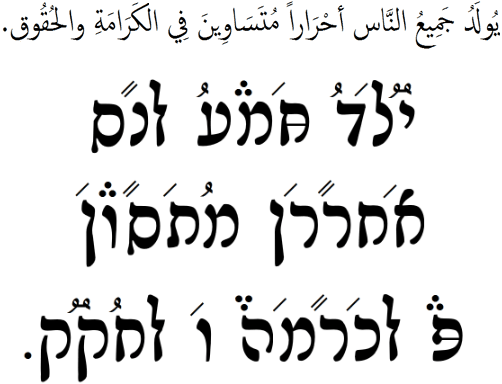May this script contribute in some small and subtle way to peace in the Middle East – by a merging of Hebrew and Arabic textual presentation. It is designed for the writing of Arabic, using a modified Rashi style of Hebrew consonants with modified Arabic vowel points. (This technique of hybridizing alphabets can also be seen in Mattias Persson’s work.) The script quite naturally runs right-to-left, and highlights the consonant-radical kind of word-root system that Hebrew and Arabic share. The script’s English name is a merging of two words.
Consonants
The basis for the consonants is a form of Hebrew writing named after Rabbi Shlomo Yitzhaki, a 10th century Jewish scholar. Some letters have been modified in an Arabic or Persian manner: a single thin bar is added where Arabic adds a dot to its equivalent letter, and a double bar is used where Arabic adds a triple dot. An additional glyph stands in for the article /al/, which in speech may have the /l/ assimilated with the following consonant, and the /a/ elided with a prior vowel.
Some letters have a special form when appearing at the end of a word, often with a tail hanging below the baseline. The last one here is for /t/ marbuta, being a common feminine-gender ending.
Vowels
The vowels are based loosely on Arabic marks, and represent canonical Arabic vowel sounds. The little spur at the top-left of many consonants is reminiscent of the Arabic riser upon which dots sit, and so it is somewhat ideal that these vowels will hover above it.
Example
This is the first statement from Article 1 of the Universal Declaration of Human Rights: “All human beings are born free and equal in dignity and rights.” Arabic text from Omniglot.





